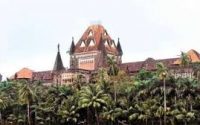$100 Website Offer
Get your personal website + domain for just $100.
Limited Time Offer!
Claim Your Website NowGovernment Can’t Manage Economy, How Can They Fix Ecology: Bombay Court
Source: ndtv.com
MUMBAI: Amid a raging row over felling of trees for a metro car shed in Mumbai, the Bombay High Court on Monday quipped how the government would manage ecology when it cannot handle the national economy with best resources at its disposal.
The remark was made by a division bench of Chief Justice Pradeep Nandrajog and Justice Bharati Dangre while hearing a public interest litigation opposing felling of over 2,600 trees in Aarey colony, a green belt in suburban Goregaon, to make way for a car shed for the Metro III project.
The Public Interest Litigation has been filed by environmental activist Zoru Bathena, challenging a decision taken by the Brihanmumbai Municipal Corporation’s (BMC) tree authority on August 29 to allow the Mumbai Metro Rail Corporation Ltd (MMRCL) to cut 2,646 trees in Aarey area.
Zoru Bathena’s counsel Janak Dwarkadas on Monday argued that the tree authority’s decision suffers from “non- application of mind” and was taken in “haste” without following provisions laid down under the Trees Act.
“The main object of the civic body’s tree authority is to preserve and protect the trees and green cover in the city. Instead, it is mechanically granting permissions,” he said.
“This is not a rational decision taken by the authority. The decision was taken in haste as the authority wanted to grant the approval before the code of conduct for the assembly elections comes into force,” Mr Dwarkadas said.
The assembly poll schedule for Maharashtra was announced on September 21.
Zoru Bathena’s counsel said while the metro project was important and in public interest, the city’s green cover was equally important if not more.
The bench, after hearing Mr Dwarkadas’s arguments, said the development versus environment issue was “vexed” and that it would add another point to the petitioner’s contentions.
“With all the best resources at their disposal if the government cannot manage the national economy then how can they manage the ecology,” Chief Justice Nandrajog said.
“They (government) have the best economists working for them but still something is lacking,” he added.
Mr Dwarkadas pointed out to the court that the BMC’s tree authority had ignored the recommendations submitted by two experts on its panel.
If the tree authority is giving approval against the opinion of the experts on its panel then reasons for doing so should be recorded,” he argued.
The senior counsel said soon after the approval was granted, one of the experts from the authority, Shashirekha Kumar, resigned claiming most of the recommendations submitted by her and the other experts were not considered by the panel.
Mr Dwarkadas said the authority, in its over 900-page proposal granting permission to MMRCL, did not even record the objections raised by the petitioner and over one lakh common citizens during the two public hearings conducted by the authority in October last year and in July this year.
The bench will continue hearing arguments on the issue on Tuesday.
The authority approved the felling of 2,185 trees and transplanting (uprooting trees from the original spot and replanting them at an alternate spot) 461 trees from the area, considered as Mumbai’s major green lung.
The tree authority’s approval is mandatory for felling of more than 20 trees at a time at any place in the financial capital.
The authority has a total of 19 members at present, including the BMC commissioner.
Of these, five members are independent experts nominated by the BMC as per its own rules and the High Court’s previous orders.
According to the petition, the August 29 proposal to hack trees was approved by a majority of 8:6 members (the civic commissioner did not vote).
Two corporators, who are members of the panel, walked out of the meeting over differences with the decision, while two independent experts were absent, the plea said.
A large number of environmental activists and common citizens are protesting the proposed hacking of trees in Aarey area, which is home to tribals, hundreds of wildlife species, unique flora and fauna.



